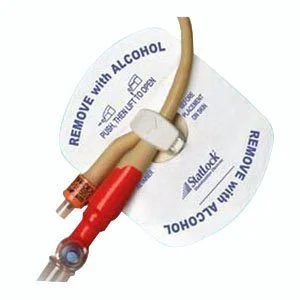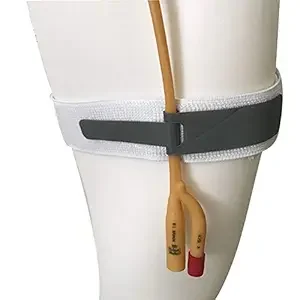🚽 7 Essential Tips for Foley & SPT Care Made Simple | The Unmedical Caregiver’s Guide
Understanding Foley Catheters and Suprapubic Tubes (SPT)
Caring for someone with a Foley catheter or suprapubic tube (SPT) doesn’t have to be overwhelming. At its core, it’s about keeping the system clean, anchored, and flowing. These three rules prevent most problems caregivers face.
What’s the Difference Between a Foley and an SPT?
Foley Catheter: Inserted through the urethra into the bladder, held in place by a small balloon.
Suprapubic Tube (SPT): Inserted through a small opening in the lower abdomen into the bladder. Also secured by a balloon.
Both serve the same purpose: drain urine when the bladder can’t empty on its own.
Why Catheters Are Used in Home Care
Catheters are common for people with bladder retention, prostate issues, spinal cord injuries, or severe illness. They can be short-term or permanent. As a caregiver, your role is to keep them safe and infection-free.
Tip #1: Hand Hygiene Is Non-Negotiable
The #1 way to stop urinary tract infections (UTIs) is handwashing. Every single time you touch the catheter, drainage bag, or tubing—wash first, wash after.
How to Wash Hands the Right Way
Wet hands with warm water.
Use regular soap, scrub for at least 20 seconds.
Clean under fingernails and between fingers.
Dry with a clean towel.
Why Handwashing Prevents UTIs
UTIs happen when bacteria travel up the catheter into the bladder. Most bacteria come from hands. A 20-second wash is the simplest lifesaver in caregiving.
Tip #2: Clean the Catheter Site Daily
Keeping the entry site clean lowers infection risk and protects skin.
Simple Soap-and-Water Routine
Wash hands first.
Use mild soap and warm water.
Gently clean the skin around the catheter insertion site.
Pat dry with a clean towel.
No need for fancy wipes or solutions unless prescribed.
Peri-care Basics for Women and Men
Women: Always wipe front to back to avoid spreading bacteria.
Men: Clean around the urethral opening or abdominal SPT site daily.
Tip #3: Keep It Anchored (StatLock, Straps & Tape)
Catheters aren’t meant to dangle. A loose catheter can pull, leak, or cause trauma. Anchoring keeps everything stable.
Why Anchoring Prevents Trauma
If a Foley catheter gets yanked, it can tear tissue and cause bleeding. An SPT can shift and irritate the skin. Anchoring = safety.
Tools Caregivers Can Use at Home
Catheters must always be anchored to prevent pulling, leaks, or trauma. Here are two simple caregiver-friendly options you can buy online:
In my experience, the easiest way to avoid kinks and pulling is to clip the anchor to the catheter first, then position it on the leg or abdomen. That way you can adjust placement for comfort and movement before locking it in.
StatLock Catheter Securement Device – A sticky pad with a clip that locks the tubing in place. Low profile, easy to use, and comfortable.
Catheter Leg Strap – A soft elastic strap that gently holds the tube in place on the thigh or calf. Simple, effective, and reusable.
👉 Either option works—the point isn’t “which one” but that the catheter is anchored every time.
Tape method: if nothing else is available.
Think of it like a seatbelt for the catheter—no anchor = accidents waiting to happen.
Tip #4: Keep the Flow Clear
Urine should always flow smoothly down the tubing into the bag.
Avoiding Kinks and Blockages
Check tubing regularly for bends or kinks.
Make sure the person isn’t lying on the tubing.
Coil extra tubing in a loose loop.
Bag Positioning: Leg Bag vs. Night Bag
Leg bag (small): For daytime, easier to walk around with.
Night bag (large): For sleeping, holds more urine so it doesn’t overfill overnight.
Always keep the bag below bladder level so urine flows down, not back up.
Tip #5: Empty the Bag Before It Overfills
A bag that’s too full can backflow urine into the bladder and cause infection.
How Often to Empty Foley or SPT Bags
Empty when two-thirds full or at least twice a day.
Safe and Clean Emptying Steps
Wash your hands.
Hold the bag spout over the toilet or container.
Open the valve, drain fully.
Wipe spout with a clean tissue.
Wash your hands again.
Tip #6: Watch for Infection Signs Early
A catheter puts someone at higher risk for UTIs. The earlier you spot it, the safer they’ll be.
What a UTI Looks Like in Real Life
Cloudy or foul-smelling urine
Burning, pain, or cramping
Fever, chills, confusion, or sudden change in behavior
If output is much lower than usual or below ~400 mL in 24 hours
When to Call the Doctor
If urine looks bloody or cola-colored
If no urine drains for several hours
If fever or confusion develops
If output is below 400 mL in 24 hours
Tip #7: Protect Skin and Dignity
Caring for someone with incontinence or catheters isn’t just medical—it’s personal.
Preventing Skin Breakdown
Change wet clothes or bedding quickly.
Use breathable incontinence pads (avoid plastic-backed).
Keep skin clean and dry.
Handling Incontinence with Compassion
Embarrassment is common. A calm, matter-of-fact approach preserves dignity. Small changes like bedside commodes, handrails, or higher toilet seats make a big difference.
Quick Caregiver Recap: The Big 3 Rules
Catheter care boils down to three things:
Clean hands.
Anchored tube.
Clear flow.
Stick to those and you’ll prevent 90% of problems.
FAQs About Foley & SPT Care
Q: How often should the catheter site be cleaned?
Daily with mild soap and water, plus after soiling.
Q: Can you shower with a Foley or SPT?
Yes, but avoid soaking in baths. Keep the site clean and dry afterward.
Q: What’s the difference between a leg bag and a night bag?
Leg bags are smaller and strapped to the leg for daytime mobility. Night bags are larger and hang by the bed.
Q: How do I know if the catheter is blocked?
No urine draining, bladder feels full, or tubing looks kinked.
Q: What are red flags for a UTI?
Cloudy urine, strong odor, fever, confusion, or pain.
Q: How often should catheters be replaced?
Varies. Some need monthly changes. Follow the doctor’s instructions.
Final Thoughts + A Caregiver’s Shortcut
Caring for a Foley or SPT isn’t complicated once you know the basics: clean, anchor, flow.
If you’re a family caregiver, having clear, unmedical guidance can save stress and prevent emergencies.
For a deeper dive into caregiving—covering catheters, skin care, mobility, and more—check out The Unmedical Manual for Caregivers, now available on Amazon. It’s packed with direct, practical tips just like these to help you care for your loved one confidently.


